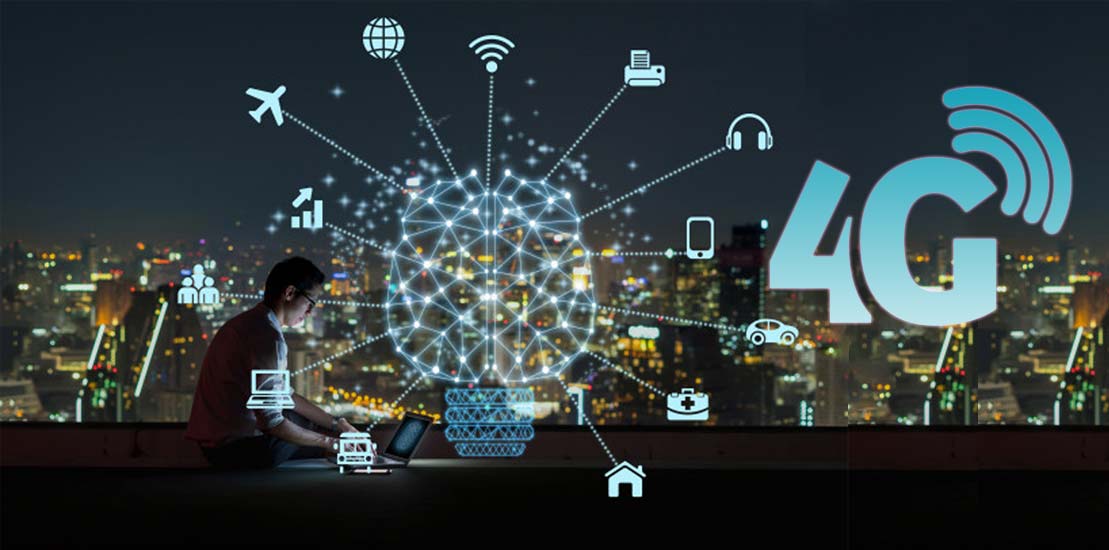4G LTE-M NB-IoT are the future of cellular IoT. The key requirement for the latest MTC applications is the deployment of a radio access network. This network must have the potential to match various spectrum allocations for operators, access a large area, low battery consumption, and boost low-cost devices with great efficiency.
MTC, or Machine Type Communication (an automated data communications between gadgets and data transport infrastructure), applications can provide solutions for agriculture, smart metering, monitoring, logistics, and various other management tasks. Most MTC gadgets are currently located in places where they can’t carry proper signals while dealing with information like building basements, forests, remote areas, etc.
Better performance and more coverage are benefits of the licensed spectrum because technologies operating within the unlicensed spectrum suffer performance issues due to unexpected obstacles that cause interference.
Why are LTE-M and NB-IoT required?
NB-IoT stands for Narrowband Internet of Things, while LTE-M refers to the Long Term Evolution for Machines. They are the standard designed by 3GPP for organizations using LTE and 5G. With these standards, organizations can operate cellular infrastructure for the massive deployment of IoT gadgets.
Since they are handled within a licensed spectrum, they are reliable and safe. Both technologies work via machine-to-machine communication technology. With them, big projects like smart cities, asset monitoring, and tracking become easier to handle.
NB-IoT and LTE-M are specially designed to optimize IoT devices, which take a long time to consume large chunks of data. So, these technologies are a better option than other cellular standards.
They have many advantages such as:
- The hardware cost is very low because of the reduced complexity. The scalability can be achieved at a more efficient cost.
- They consume less power. The battery life can last up to 10 years. Due to the reduced power consumption, they are sometimes called LPWAN, or Low Power Wide Area Network.
- The optimized operations allow a huge number of IoT gadgets to communicate easily. More than 100,000 devices are available at the base station.
- They have a very long range. So they cover a huge area better than LTE.
LTE-M and NB-IoT are the new innovations for the cellular standards revolution. They will change the development of traditional applications. Imagine if your city community center automatically gets notified which trash bin needs to be emptied, the conditions of nearby roads, or approaching natural disasters. A huge range of MTC applications depend on LPWAN enabled technologies for quick and real-time communication.
You can check out how these technologies differentiate themselves:
| NB-IoT | LTE-M | |
| Maximum Throughput | 30/60 kbps | 360 kbps |
| Range | 7x times to the overall capacity | 6x times to the overall capacity |
| Mobility | Limited | Strong (also supports device movement) |
| Bandwidth | 180 kHz | 1.08 MHz |
| Voice and Data Support | Data only | Both voice and data |
NB-IoT and LTE-M are the main force driving Cellular IoT:
The main reason for the popularity of NB-IoT and LTE-M is the massive industrial momentum. A GSMA report shows that as of May 2019, network operators have launched 114 LTE-M and NB-IoT networks. Their commercial launches will be added soon.
China Telecom is also focused on implementing NB-IoT standardization in its markets. They are working to fuel growth driven by the development of the latest IoT solutions.
Telecom giants like T-Mobile in the United States have already introduced LTE-M and NB-IoT.
Operators introduce cellular IoT solutions by upgrading software at their base stations. It means they can rapidly adopt this technology at a lower cost.
What should IoT users know?
In the coming years, various organizations will introduce new innovative products backed by cellular IoT technologies. Let’s understand the key considerations for users:
- It’s necessary to get an operator certificate for the licensed networks. RF partners will help with this.
- LTE-M and NB-IoT networks will attract huge sales. The introduction of dual-mode chipsets will let device makers create a single gadget they can deploy all over the world.
- IoT gadgets will operate up to 10 years without needing maintenance. So the parts last a long time.
NB-IoT and LTE-M Cellular IoT:
LTE-M and NB-IoT are just in their beginning stages. In the years, these cellular networks will have various applications establishing connections among billions of gadgets. Since they have extended battery life and long-range connectivity, these devices will be in high demand for their many uses.
NB-IoT also allows devices to increase the data rates, especially if there is a weak coverage area. It can also add bandwidth. This data rate can be enhanced up to 12 times to the overall capacity for a good coverage area with a fast data transfer rate.
Range Performance Calculation:
The key factors behind mobile network coverage are link budget and the density of the site. To compare NB-IoT with the rest of the concepts like WCDMA, LTE, or GPRS, it has 20 dB differences. It can also operate with lower information ranges. The link budgets for all of them are:
- LTE 142.7 dB
- NB-IoT 164 dB
- GPRS 144 dB
NB-IoT also fulfills the demand for battery life and rate latency. It can efficiently handle gadgets by putting them in sleep mode when they are not being used. Thus, it turns off a few parts of the battery to achieve longevity.
Like LTE, it depends on 2 RRC protocol states RRC_connected, in which direct data can be transferred between gadgets, and RRC_idle, which saves power.
This technological era has changed M2M communication protocols. It has added growth in the telecom sector with innovative technologies like LTE-M and NB-IoT. The future of cellular is getting brighter as companies adopt this technology. Smart applications for cities, industries, manufacturing units, parking, and more will not be a dream anymore.
